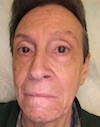 [As some of my readers know, in addition to my professional work as a critic, historian, and theorist of photography I’m an avocational, on-again-off-again writer of poetry, short fiction, and creative nonfiction. You’ll find information about that elsewhere at The Nearby Café.
[As some of my readers know, in addition to my professional work as a critic, historian, and theorist of photography I’m an avocational, on-again-off-again writer of poetry, short fiction, and creative nonfiction. You’ll find information about that elsewhere at The Nearby Café.
In 2005 I began preparing for publication a book titled Like Father Like Son, combining my own poetry with that of my father, Earl M. Coleman. In its published form, our book has two front sides and no back side, so as to give equal weight to both my father’s work and my own. (For a selection of my father’s work online at The Nearby Café, click here.)
Earl decided to include in his half of the book an interview with him that the editor of a “little” poetry magazine had conducted and published. I decided to mirror that in my half of the book; but, having no apropos existing interview to use, and no available interrogator to conduct one, I decided to do it myself, asking myself a set of questions comparable to those my father had answered. This is the result, drafted between August 2005 and June 2006.
Periodically, here at this blog and elsewhere, I have discussed my practice as a critic. But I haven’t published much about my writing as such. This is the most extensive consideration of my craft that I’ve ever drafted. Since some readers have asked about my background, it seems fitting to post it during this 50th-anniversary year.
In this meditation I make occasional reference to poems from the book not included in this self-interview. You can download a pdf file of my half of the book here. Part 1 appears below; click here for part 2. — A.D.C.]
•
Allan Douglass Coleman: A Self-Interview (1)
Q: Where is your creative writing now?
A: In a state of transition. Unlike my father, who moves steadily and almost daily between lyric poetry and fiction both long and short, I’ve primarily written lyric poetry, with occasional forays into short fiction and creative nonfiction. That’s aside from my professional work as a prose essayist, which absorbs most of my writing time and energy.
In the spring of 2005 I gathered the poems I’ve published to date, for the purpose of seeing how they looked together and with an eye toward making a book out of them. That process led indirectly to this collection. It also gave me, for the first time, a sense of what I’d done as an on-again-off-again poet up till then — a certain summing up, which I found very useful.
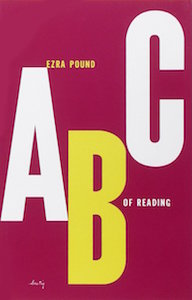 At the same time as I was pulling those pieces together, by coincidence, I re-read two books: Ezra Pound’s An ABC of Reading and Donald Allen’s anthology The New American Poetry 1945-1960, which contains work by Ginsberg, Creeley, Levertov, Duncan, Spicer, Olson, Koch, and many others, as well as some germinal texts on poetics, including Olson on “Composition by Field.” Pound’s book in its way traces the genesis of that tendency, and many of the poets in that anthology look to Pound as a precursor.
At the same time as I was pulling those pieces together, by coincidence, I re-read two books: Ezra Pound’s An ABC of Reading and Donald Allen’s anthology The New American Poetry 1945-1960, which contains work by Ginsberg, Creeley, Levertov, Duncan, Spicer, Olson, Koch, and many others, as well as some germinal texts on poetics, including Olson on “Composition by Field.” Pound’s book in its way traces the genesis of that tendency, and many of the poets in that anthology look to Pound as a precursor.
I’d owned this collection by Donald Allen when it first came out, knew the work of those poets, had been much affected by them — Ginsberg particularly — and had even read some of the manifestos and commentaries on poetics that book contains in its appendix. But I don’t think I’d understood what these poets were after and had achieved until now. I’d felt the fresh air they’d breathed into poetry, and enjoyed it, and been nourished by it creatively and culturally. But I hadn’t recognized what they’d accomplished structurally and infrastructurally, the formal and ideational aspect of it: breath, syllable, line, the page as canvas, even Olson’s percept of the function of the typewriter as an instrument for poetry. [Note: for more on this, see my series of posts “Jack Kerouac: Tech Pioneer.” — A.D.C.] I hadn’t written enough poetry to realize the consequences of their methods. I’d enjoyed the outcome of the praxis, as a reader, without grasping the underlying theory.
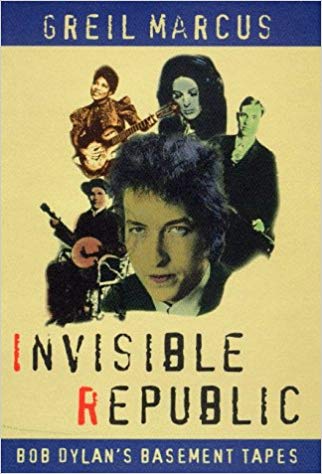 This sudden if belated insight dovetailed with my reading, a year earlier, of Greil Marcus’s Invisible Republic, a meditation on Bob Dylan’s “Basement Tapes,” which goes beyond Dylan to weigh the transition that he represents between what Walter Ong, writing on the difference between spoken and written language, would describe as first-stage orality versus second-stage orality. The music that Dylan studied and absorbed as he came into his own voice was created to be passed along directly and acoustically from the singer’s mouth to the listener’s ear, and was only incidentally recorded, whereas the contemporary music of Dylan’s day — classical, pop, jazz, rock, r&b, country, even folk and blues — was conceived with the assumption that it would reach its optimum audience through electricity/amplification and/or recording: oral transmission at one remove.
This sudden if belated insight dovetailed with my reading, a year earlier, of Greil Marcus’s Invisible Republic, a meditation on Bob Dylan’s “Basement Tapes,” which goes beyond Dylan to weigh the transition that he represents between what Walter Ong, writing on the difference between spoken and written language, would describe as first-stage orality versus second-stage orality. The music that Dylan studied and absorbed as he came into his own voice was created to be passed along directly and acoustically from the singer’s mouth to the listener’s ear, and was only incidentally recorded, whereas the contemporary music of Dylan’s day — classical, pop, jazz, rock, r&b, country, even folk and blues — was conceived with the assumption that it would reach its optimum audience through electricity/amplification and/or recording: oral transmission at one remove.
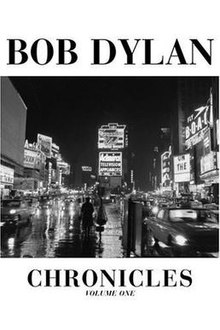 Between absorbing Marcus and coming back to Pound and the Allen anthology I read Dylan’s own autobiography, Chronicles Vol. 1, a remarkable and surprising piece of writing that gave me numerous other useful clues. (As this suggests, Dylan plays a central role in my thinking. I wouldn’t call him an influence, in the usual sense; I don’t think you’d hear him identifiably in anything specific I’ve written. For me, he’s a reference point, a fulcrum, the single most important artist of my generation in any medium.)
Between absorbing Marcus and coming back to Pound and the Allen anthology I read Dylan’s own autobiography, Chronicles Vol. 1, a remarkable and surprising piece of writing that gave me numerous other useful clues. (As this suggests, Dylan plays a central role in my thinking. I wouldn’t call him an influence, in the usual sense; I don’t think you’d hear him identifiably in anything specific I’ve written. For me, he’s a reference point, a fulcrum, the single most important artist of my generation in any medium.)
Anyhow, the mix of all of this somehow helped me to understand a number of things, including the sources of my own voice(s) as a writer. It highlighted an element of constraint I could see in much of my own poetry, and explained certain poems of mine from recent years that I’d considered eccentric to my way of working but that I now see as unplanned experiments in moving toward what Olson calls “open form” and “composition by field.” Simply put, I began playing with the line and organization of the page in ways I hadn’t tried before.
Look at this one, from 1998:
License
The eye
lusts
& I
let it /
see what
it
can /
unable
to imagine
ever
saying:
I
have seen
enough
I didn’t know what to make of this when I wrote it. I saw it that way in my head before I put it down on paper, and it felt (still feels) absolutely right to me that way. But it was entirely untypical of my work — even though my work takes numerous forms, or at least has up till now. So it seemed anomalous. Now I can look back and see it as pivotal: a starting point, small in scale, from which several other poems came, even before this epiphany or shift in awareness happened in spring 2005.
There have been a dozen since then — “Frieze,” for example — that move further along this path. So some change has come along, an approach to form that’s new to me but feels organic, right. And though I doubt that I will ever become an epic poet, I begin to grasp what Olson meant when he suggested that composition by field might lead to work in longer forms.
Q: Do you consider yourself an experimental poet?
A: Hardly. I’m definitely more interested in radical formal innovation than my father. I read more widely among the experimental poets than he does: Jackson MacLow, concrete poetry, Bernadette Mayer. I have poet friends and acquaintances whom I certainly consider radically experimental: Richard Kostelanetz, the late Armand Schwerner. I’ve pondered the implications of hypertext forms, and played with them a bit. I’ve used Tristan Tzara’s Dada cut-up method for making poems, and a computer-based version of refrigerator-magnet poetry for other poems, and built poems out of found elements. (For example, “Dead Letter” and Microscope,” in this collection, are composed of definitions taken from a discarded portion of an Arabic-English dictionary that I came across on the street outside my house.) I’ve distilled oneiric messages in the “Dream Poems” series. And, employing more conventional means, such as page layout, I’ve produced a few pieces I think of as experimental in one way or another, such as “License” or “‘I think,’ he said,” elsewhere in this book.
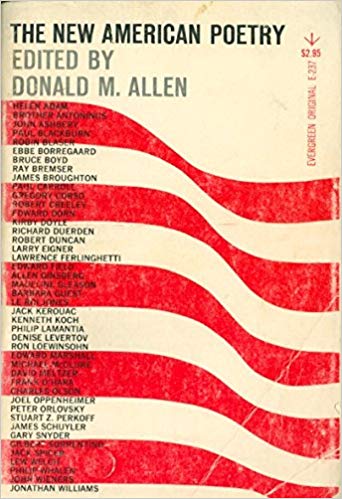 But compared to the people I just named I’m a traditionalist, or at best mainstream, at least so far. After all, the paradigm shift I feel myself pulled toward lately, as just mentioned, defined itself half a century ago. I could argue, as have others, that this approach constitutes poetry’s own permanent revolution; and obviously I haven’t wrung out all the juice in it for myself. Still, as experiment goes, it’s hardly news.
But compared to the people I just named I’m a traditionalist, or at best mainstream, at least so far. After all, the paradigm shift I feel myself pulled toward lately, as just mentioned, defined itself half a century ago. I could argue, as have others, that this approach constitutes poetry’s own permanent revolution; and obviously I haven’t wrung out all the juice in it for myself. Still, as experiment goes, it’s hardly news.
However, experiment for one poet is not necessarily experiment for another. And experiment lives wherever you find it — sometimes in surprising places. In ’97, on a residency in Tucson, I attended a reading by the language poet Ron Silliman. Tucson has a strong poetry scene; Silliman had come there, I recall, at the invitation of Charles Alexander, who runs a small press in that city.
In addition to his reading — and Silliman’s an excellent performer of his own work, by the way — he talked theory for a while, poetics. He based that commentary on a distinction that he sees in contemporary poetry between what he called “identity poets” and “experimental poets.” He didn’t propose this as a value judgment, just a set of polarities, though predictably enough he placed the language-poetry movement of which he’s part on the experimental end of that divide.
I introduced myself after the q&a had ended, thanked him for his work and his ideas, then told him I’d been reading Adrienne Rich — surely an “identity poet” on his sliding scale — and a passing reference she makes in an essay to what she calls “columnar poems” had recently nudged me into reconsidering how I organized at least some of my poems on the page. So the comment of an “identity poet” had led me to formal experimentation. I didn’t pose this as a question, merely made an observation, and left Silliman (and myself) with its implications.
One reason I feel free not to let any of this worry me is that I have no affiliations or allegiances within the poetry world, thus no image of myself as a poet of this or that tendency, nothing to maintain in anyone else’s eyes or my own except a level of quality to my output. Over the years I’ve met and talked with various poets — Robert Stock, James Ragan, Charles Damon Catlett, Sandra Alcosser, David Antin, Michael Heller, Marie Howe, Gerard Malanga, Carolyn Forché, Nathan Whiting, Dick Gallup, Bob Holman, Lewis Hyde, even Allen Ginsberg. My father knows quite a few others. But he and I both stand outside the nexus that some people call the “po biz.” We don’t represent or belong to any clique or movement. We have no exploitable connections to those in power within that microcosm. We’re not anyone’s lovers, ex-students or ex-teachers, academic colleagues, contest judges, editors, publishers.
That doesn’t make us naïfs. We read poets past and present, we follow the discourse, we engage in discourse between ourselves and with the poets we know. But, at his age, my father hasn’t got the luxury of engaging in po-biz politicking and networking, even if he wanted to — which he doesn’t. Nor do I. We operate on the premise that it should remain possible in today’s poetry world to write solid poems anywhere along the spectrum from classicist to experimental and get them published in reputable journals strictly on their merits. Earl’s results surely prove that; I hope to follow in those footsteps. …
•
 Special offer: If you want me to either continue pursuing a particular subject or give you a break and (for one post) write on a topic — my choice — other than the current main story, make a donation of $50 via the PayPal widget below, indicating your preference in a note accompanying your donation. I’ll credit you as that new post’s sponsor, and link to a website of your choosing. Include a note with your snail-mail address (or email it to me separately) for a free signed copy of my 1995 book Critical Focus!
Special offer: If you want me to either continue pursuing a particular subject or give you a break and (for one post) write on a topic — my choice — other than the current main story, make a donation of $50 via the PayPal widget below, indicating your preference in a note accompanying your donation. I’ll credit you as that new post’s sponsor, and link to a website of your choosing. Include a note with your snail-mail address (or email it to me separately) for a free signed copy of my 1995 book Critical Focus!
 But wait! There’s more! Donate now and I’ll include a copy of The Silent Strength of Liu Xia, the catalog of the 2012-13 touring exhibition of photos by the dissident Chinese photographer, artist, and poet, currently in her sixth year of extralegal house arrest in Beijing. The only publication of her photographic work, it includes all 26 images in the exhibition, plus another 14 from the same series, along with essays by Guy Sorman, Andrew Nathan, and Cui Weiping, professor at the Beijing Film Academy.
But wait! There’s more! Donate now and I’ll include a copy of The Silent Strength of Liu Xia, the catalog of the 2012-13 touring exhibition of photos by the dissident Chinese photographer, artist, and poet, currently in her sixth year of extralegal house arrest in Beijing. The only publication of her photographic work, it includes all 26 images in the exhibition, plus another 14 from the same series, along with essays by Guy Sorman, Andrew Nathan, and Cui Weiping, professor at the Beijing Film Academy.


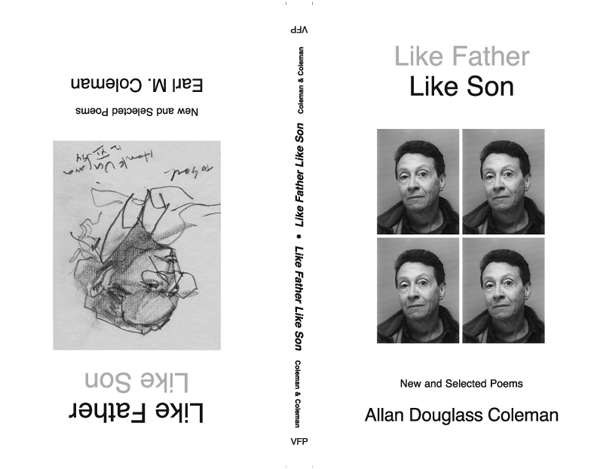




How about bloging some new poems from your engagements with specific photographs???
I have written a few poems — and one piece of creative nonfiction — based on personal photos from my own life and/or vernacular images. Some of those poems appear in this book, under the title “Family Album.”
However, I have no inclination to write what generically gets called “ekphrastic” poetry — poems based on pictures or other works of visual art. These have become trendy, a common exercise in creative-writing courses, with entire anthologies devoted to them. I even have a few obscure, out-of-print collections of poems about photographs.
Undeniably, some great ekphrastic poems exist; Auden’s “In the Musée des Beaux Arts” comes most readily to mind. But the vast majority I find simply embarrassing, diminishing rather than amplifying the works they use as jumping-off points. Indeed, I have written a poem that begins “Whenever I hear the word ekphrastic / I reach for my sawed-off shotgun.”
My lifelong involvement with creative writing certainly informs my work as a critic, as the following passage (from a 1992 review of Sally Mann’s work) suggests:
“Imagine yourself standing at one end of a long picnic table on the expansive open deck of a house in the Virginia woods. It is a hot, clear day, rich with bright sun and deep shade. Someone has just returned from the garden bearing fresh-picked tomatoes, half a dozen of which sit on the table before you. The table is drenched with light. And suddenly, from out of nowhere, an angel appears on it. She has the appearance of an eight-year-old girl, her naked body lean as a whippet’s, but she is so soaked with the sun streaming down from above that she is almost translucent and surely intangible. With arms raised and toes pointed, she is demonstrating how one dances on the head of a pin. Transfixed by this vision, you cannot look away or focus elsewhere. But from the corner of your left eye, blurrily, you see another young girl, astride a man’s lap in the shadow of the house, who mirrors your astonishment, her mouth dropping open in awe at this miraculous apparition.”
As critical description, that is true to the verifiable facts embedded in Mann’s photograph “The Perfect Tomato,” as well as to its voice and tone. And it’s as close to ekphrastic as I care to get.
I-I-I-I- We know you are speaking in first person.
Clean up all the I’s….. -learned this in 3rd grade-
L.A.B.
Writing in the first person without frequently using “I” and “me” proves just about impossible. Try it and see.
By the time I became a working professional writer, half a century ago, I had unlearned most of the archaic rules taught to me in grade-school English classes.
And I don’t take writing instruction from anyone who uses an apostrophe to indicate a plural, or makes his ellipsis five periods long instead of three.